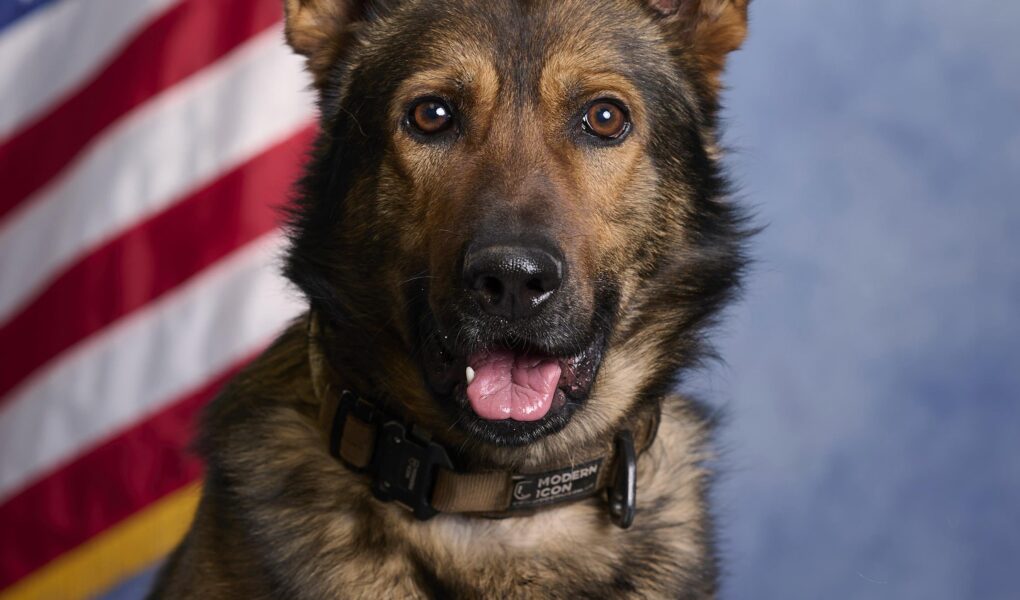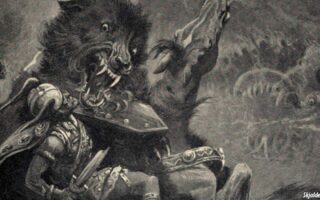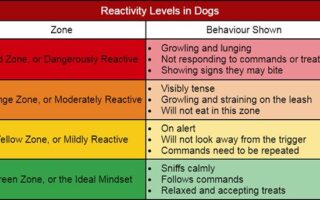In a world where loyalty knows no bounds and instincts are finely tuned, the bond between humans and their four-legged companions rises to a remarkable level. Enter the K9 dog—an epitome of dedication and skill, playing pivotal roles in security, search and rescue, and companionship. These remarkable animals are not just pets; they are trained professionals, adept at tasks that often surpass human capabilities. From sniffing out contraband to guiding the visually impaired, K9 dogs have proven time and again that their contributions are invaluable. In this article, we will explore the fascinating world of K9 units, unraveling the intricacies of their training, the breadth of their duties, and the profound impact they have on our lives. Join us as we delve into the remarkable stories and capabilities of man’s best friend in uniform.
Table of Contents
- Understanding the Unique Traits of K9 Dogs
- Essential Training Techniques for Effective K9 Collaboration
- Health and Wellness Considerations for Working K9 Teams
- Integrating K9 Units into Community Safety Programs
- Q&A
- The Conclusion
Understanding the Unique Traits of K9 Dogs
K9 dogs are celebrated not only for their loyalty but also for their exceptional physical and mental traits that make them ideal partners in law enforcement and security. Their enhanced sense of smell allows them to detect drugs, explosives, and even human scents from great distances. These canines possess powerful instincts honed through rigorous training, enabling them to perform under pressure. Some key traits include:
- Intelligence: Quick learners who can follow complex commands.
- Physical Strength: Well-built canines capable of apprehension and protection.
- Adaptability: Thrive in various environments, from urban settings to rural landscapes.
Moreover, a significant aspect of K9 dogs is their bonding ability with their handlers, which fosters trust and teamwork in the field. This strong relationship is vital for the success of mission operations, where communication goes beyond vocal commands. The breed characteristics often seen in K9 units include:
| Breed | Common Traits |
|---|---|
| German Shepherd | Intelligent, versatile, protective |
| Belgian Malinois | Agile, energetic, responsive |
| Bloodhound | Exceptional scent tracking, friendly |
Essential Training Techniques for Effective K9 Collaboration
When fostering collaboration between handlers and K9 partners, employing diverse training techniques can significantly enhance their connection and effectiveness. One of the most successful methods is positive reinforcement, which builds trust and encourages dogs to repeat desired behaviors. This technique involves rewarding your dog with treats, praise, or play whenever they demonstrate obedience or complete a task successfully. For optimal results, it’s essential to maintain consistency in commands and reward timing. Additionally, utilizing clicker training can further refine communication; a click sound marks the instant a command is performed correctly, making it clear to the dog what behavior is being rewarded.
Another key aspect of effective K9 training is socialization. Exposing dogs to different environments, people, and other animals prepares them for various real-world scenarios, reducing anxiety and behavioral issues during collaborations. Incorporating obedience drills and agility exercises can also improve a K9’s responsiveness and coordination. Consider the following effective techniques for enhancing collaboration:
| Technique | Description |
|---|---|
| Positive Reinforcement | Rewarding desired behaviors to build trust and compliance. |
| Clicker Training | Using a click sound to mark correct behaviors for clarity. |
| Socialization | Introducing dogs to various environments to reduce anxiety. |
| Obedience Drills | Practicing commands to improve responsiveness. |
| Agility Exercises | Enhancing coordination to boost teamwork efficiency. |
Health and Wellness Considerations for Working K9 Teams
Ensuring the health and wellness of working K9 teams is essential not just for the dogs but also for their human partners. First and foremost, regular veterinary check-ups are critical to monitor and maintain the overall health of the K9s. These checks should encompass vaccinations, dental care, and routine health screenings. Additionally, focusing on nutrition plays a significant role in a dog’s performance and longevity. Tailoring a balanced diet that meets the specific needs of working dogs helps to enhance their energy levels and overall strength. Consider the following key points in your health regimen:
- Hydration: Always provide fresh water, as hydration is crucial during intense training or working sessions.
- Exercise: Ensure a proper exercise schedule that promotes physical fitness without leading to overexertion.
- Hygiene: Regular grooming to prevent skin infections and other health-related issues.
Moreover, mental health is equally important in keeping K9s focused and alert. Engaging in variety of training exercises helps keep them mentally stimulated. Furthermore, consider creating a wellness protocol that includes stress-reduction strategies. A common approach involves integrating relaxation activities into their routine. The following table summarizes effective wellness strategies:
| Strategy | Purpose |
|---|---|
| Play Sessions | Encourages physical activity and reduces stress. |
| Aromatherapy | Promotes relaxation and enhances mood. |
| Positive Reinforcement Training | Builds confidence and strengthens the bond with handlers. |
Integrating K9 Units into Community Safety Programs
The effective integration of K9 units into community safety initiatives serves not just the enforcement aspects of law enforcement but also fosters a deeper connection between police and the communities they serve. By actively involving K9 teams in public outreach programs, law enforcement agencies can promote awareness and education regarding the capabilities and roles of these specially trained animals. This outreach can include demonstrations, community events, and even school presentations that showcase the dogs’ skills in detection, apprehension, and service. Through these interactions, communities gain insight into the positive impact that K9 units have on public safety and discover ways to collaborate for better neighborhood security.
In addition to fostering trust through positive interactions, K9 units can play a vital role in specialized operations aimed at community issues such as drug awareness and crime prevention. Agencies can develop programs that enlist K9 units for tasks such as patrols during community events or searches during local fairs, which not only enhance safety but also deter criminal behavior. Leveraging technology, agencies can maintain public safety status updates via social media, showcasing the K9 unit’s participation in these activities. Below is a simple representation of potential community engagement activities:
| Activity | Description | Frequency |
|---|---|---|
| Demonstrations | Live displays of K9 skills to educate the community. | Quarterly |
| School Visits | Educational talks about safety and K9 roles. | Monthly |
| Community Events | Participate in local fairs to promote safety. | Bi-annually |
| Drug Awareness Programs | Engagements focusing on K9 detection capabilities. | Annually |
Q&A
Q&A: Understanding K9 Dogs and Their Roles
Q1: What is a K9 dog?
A1: A K9 dog, typically pronounced “canine,” is a specially trained dog that works alongside law enforcement and military personnel. These dogs are bred and trained to assist in various tasks such as search and rescue, narcotics detection, tracking criminals, and even bomb detection. Their keen senses and trainable nature make them invaluable partners in public safety.
Q2: How are K9 dogs selected and trained?
A2: The selection of K9 dogs often involves evaluating their temperament, intelligence, and physical capabilities. Breeds like German Shepherds, Belgian Malinois, and Labrador Retrievers are popular choices due to their natural instincts and compatibility with training. Once selected, these dogs undergo a rigorous training program that includes obedience, agility courses, scent detection, and scenario-based exercises to hone their skills for specific tasks.
Q3: What types of tasks do K9 dogs perform?
A3: K9 dogs perform a variety of essential tasks. They may be involved in apprehending suspects, tracking missing persons, detecting illegal substances, or searching for explosives. Additionally, K9 dogs play a crucial role in crowd control during large events, and some are trained as therapy dogs to provide comfort in traumatic situations.
Q4: Do K9 dogs have a special relationship with their handlers?
A4: Absolutely! The bond between a K9 dog and its handler is profound and built on mutual trust and respect. Handlers spend countless hours training and working with their dogs, leading to a strong emotional connection. This relationship is vital for successful teamwork, as it enhances communication and ensures that both the dog and handler can perform at their best during high-pressure situations.
Q5: What is the typical lifespan of a K9 dog?
A5: The lifespan of a K9 dog generally ranges between 7 to 12 years, depending on the breed and the nature of their work. While they may retire from active service when they reach a certain age or can no longer perform their duties, many K9 dogs continue to live with their handlers or in loving adoptive families, enjoying a well-deserved retirement.
Q6: Are there special considerations for K9 dog care?
A6: Yes, K9 dogs require specialized care tailored to their needs. Their training and operational duties mean they must maintain peak physical condition, so regular exercise and a balanced diet are essential. Routine veterinary check-ups, mental stimulation through training exercises, and ample downtime for rest are also crucial in ensuring their well-being.
Q7: How can the public support K9 units?
A7: The public can support K9 units in several ways, such as attending community events, contributing to fundraising efforts, or even volunteering with organizations that train service dogs. Advocacy for K9 units can raise awareness about the critical roles these dogs play in safety and security, encouraging community engagement and support for law enforcement initiatives.
Q8: What makes K9 dogs an indispensable asset in law enforcement?
A8: K9 dogs possess an extraordinary sense of smell—far superior to that of humans—which allows them to detect substances like drugs and explosives more accurately. Their agility and ability to navigate challenging terrains also enhance search and rescue operations. Furthermore, the presence of a K9 team often serves as a deterrent to crime, making communities feel safer while demonstrating a commitment to efficient law enforcement.
With their unique skills and loyal companionship, K9 dogs enrich the lives of those around them and continue to be celebrated members of law enforcement teams everywhere.
The Conclusion
As we conclude our exploration of the remarkable world of K9 dogs, it becomes evident that these extraordinary canines are more than just loyal companions; they are skilled partners, unwavering protectors, and invaluable assets to law enforcement and search-and-rescue operations. Their keen instincts and specialized training empower them to tackle challenges that would be daunting for humans alone. From their ability to detect hidden substances to their role as therapy animals, K9s play a multifaceted role in our lives and communities.
As we continue to appreciate the bond between humans and dogs, let us recognize the dedication and expertise that go into training these intelligent creatures. The stories of heroism and compassion that emerge from K9 partnerships remind us of the profound connections we share with our four-legged friends. Whether they’re sniffing out danger or providing comfort in times of need, K9 dogs stand as a testament to the power of teamwork, loyalty, and the incredible capabilities of the canine spirit. In embracing their contributions, we not only pay tribute to their service but also foster greater understanding and respect for these remarkable animals in our society.



